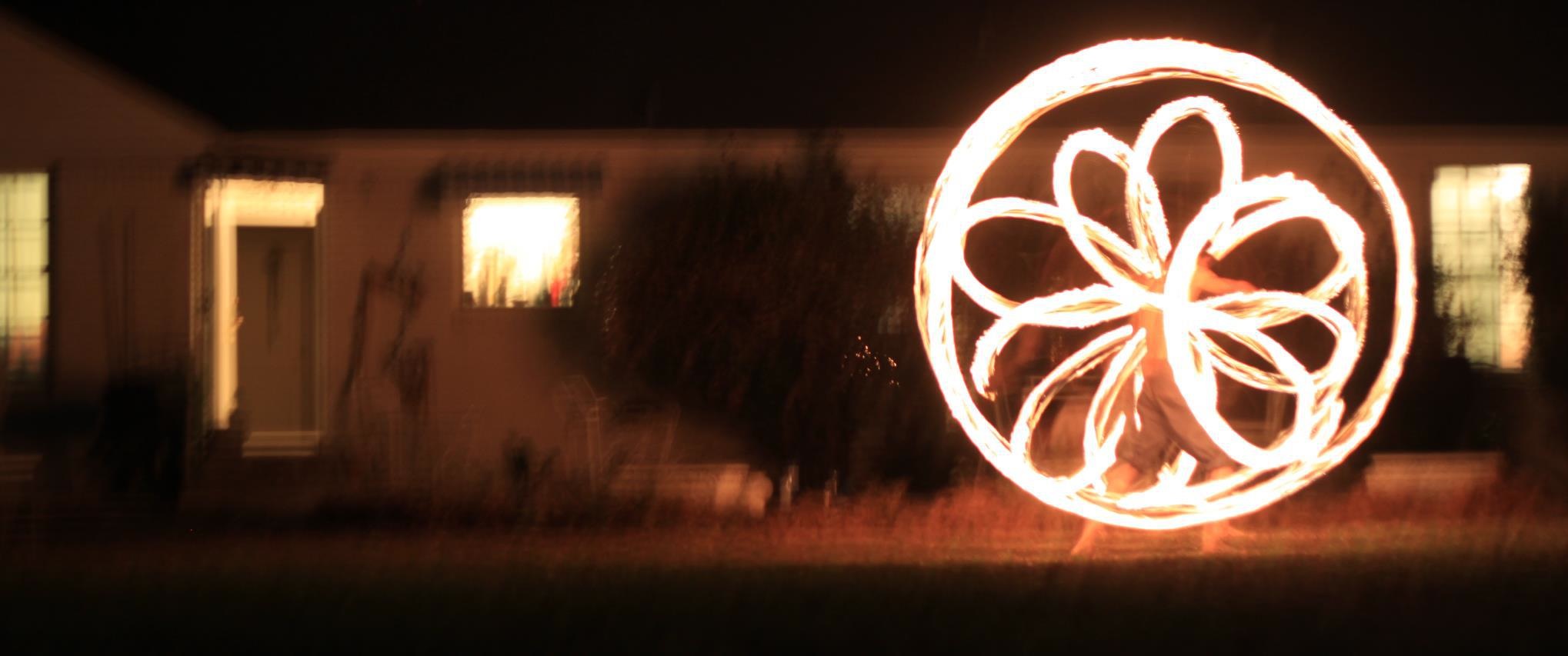Birds chirping in the background, paw prints in the moist clay, and yellow eggs under a leaf are signals from nature of the present state and possible future of an ecosystem. It’s looking into the details and patterns that develop the storyline.
Signs of Regeneration
It’s been over a year now at East Fort Worth Montessori Academy and ecological resilience is starting to take hold. In August of 2011, the soil was dry and baked to a crisp from the long drought and exposed soil horizons to the unrelenting heat. It took some time and effort to wheelbarrow all the mulch to cover the soil and in one year the environment was entirely transformed.
Today is Sunday, April 21, 2013. Sunflowers are re-emerging from last years harvest, and sorghum is beginning to come out of the ground as well. The end goal is a garden that is low maintenance and mostly self-regulating. I hope that next year, some of the cherry tomatoes will self-seed all over the garden so we don’t have to buy or propagate from seed or cuttings. Dill is germinating in locations planted last year as well, and cilantro has done a great job at re-establishing itself. The one surprise is the okra in the front yard.
Permanent Home for Life
The amount of change occurring is too much for me to process, a good thing in this case. Our parsley plants are swamped with swallowtail butterflies and we found enough lady bug eggs to supply all the classes with a ladybug life cycle kit. All the classes were able to see the egg, larva, pupa, and adult stages over a few weeks. It barely made a dent on the ladybug population outside. They’re still voraciously waging war on the aphids, mealybugs, and mites in the garden.
Predators Dominating the Pests and Parasites
There are a few rats, and small mammals that have found their way into the garden. However, this is attracting larger predators. The other day I found a Black Rat snake near the wicking propagation units. The slithering creature was huge; a good signal that he or she is hard at work. Geckos and other lizards find their way between the brush piles, and I need to learn more about them. I’m assuming most of them are good eating mostly bugs and insects.
I’ve seen a few cucumber beetles but only one so far. I’m not too worried about them this year since I’ve seen brown adult aphids under the leaves of the brussel sprouts in the garden. Brown aphids are literally mummified aphids. If you look closely enough, you may see a small hole going through the exoskeleton. This is a sign of a parasitic wasp emerging out of the aphid. The adult form of the parasitic wasp will perform surgery on a number of bugs and lay their eggs inside of them. The eggs will hatch into a larva which will eat the bug inside out and emerge as an adult that busts through the skeleton and repeats the cycle. These parasitic wasps also target other bugs like cucumber beetles so no worries there in the future.
Under Construction
There are a lot of projects still under development. The animals require a lot of attention and daily chores, changing their water, filling their water, feeding them and providing a healthy habitat for them. The major project is to create a cool environment for the rabbits. Constantly freezing bottles in the summer time is a hassle and waste of electricity. I’m hoping the underground hutch will create an environment that is cool enough for them to survive the summer heat.
Growing fodder for the animals is another consideration as well. Supplementing their diet through cafeteria leftovers and kitchen scraps is still being developed. The major setbacks have been adequate systems that empower the students so they can do it themselves. This week, I’ll be providing further assistance for the 4th grade and 5th grade students. Letting them know about the opportunity only worked for the over achieving children. The others need more guidance.
The wicking propagators are working beautifully. Sometime this week, I’ll be adding in the goldfish to regulate mosquito infestations. Self-watering barrels are being installed. The major setback has been leaks in the water tower and plastic liner. All is well though. Eighty to 160 plants can be propagated in a 4×4 area. I’ll be making them all week until I run out of space.
Find volunteers is getting easier but continues to be a struggle. Everybody voices an interest in helping but I believe everyone is working on their own projects. I hope that we may all join in the garden to help each other out. At this moment, I’ve devoted a lot of time to creating self-resilient systems and helping passionate individuals to gain a similar foothold. Starting this week, I’ll be educating formerly homeless people on how to make wine bottle planters so they can make additional income.
Last Thoughts
I do feel torn when I give great designs and systems away. Although, I see the benefit in re-creating these elements everywhere. We need more resilient gardens and the designs I give do not include the care and thought that goes with it. The people who have the same ethics and principles will have a platform for new innovation and creative ideas that suit their needs. Those that see a quick way to reach a pinnacle often hit the floor without trying. My torn feelings are unjustified. Furthermore, all of my systems do have flaws that I’m still discovering. Fixes are still needed for the wicking seed starters.
That’s all for now. I can hardly wait to taste the success and the failures.


